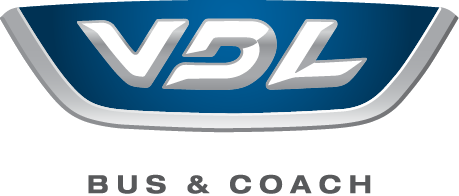
New generation of electric VDL Citeas: focus on sustainability and the local supply chain
The entire product range of the new generation of Citeas has been developed with a focus on sustainability. VDL Bus & Coach is thus making a contribution to improving the quality of European public transport. Sustainable transport solutions are essential in the liveable city, which must become quieter and cleaner. Local suppliers play an important role in minimising logistics and thus the ecological footprint of transport.
The production process of the new generation of VDL Citeas is designed in accordance with the VDL Groep motto: ‘The manufacturing industry has a future in Western Europe, Western Europe has a future because of the manufacturing industry'. The components, which together make up more than 80% of the bus's weight, are delivered from Western European countries within a 1,250 km radius of the assembly lines. After assembly, the only remaining transport is to the customer, who then puts the bus into electric service. While road transport emits more than 60 g CO2/tonne-km and shipping up to 20 g CO2/tonne-km, optimising the local supply chain contributes significantly to low environmental impact.
Cooperation with UNICEF
"As a family business, VDL Groep has always been strongly involved in the living and working environment," says president Willem van der Leegte of VDL Groep. "For us, it is therefore natural to contribute to the sustainable development of society. It is a very important theme for VDL. To underline this, we have entered into a two-year partnership with UNICEF. Together with the United Nations Children's Rights Organization, we will be mapping parts of our supply chain and working to ensure that raw materials used in our products are free from child labour."
Mapping the battery chain
In the continuous search for areas in which the sustainable contribution of VDL Bus & Coach can be improved, the battery is of great importance. UNICEF will support VDL in mapping the links in the battery chain of the new generation of Citeas and in setting up a structure that will provide insight into VDL's contribution to global sustainability goals, the so-called UN 17 Sustainable Developments Goals.
According to Van der Leegte, "With the market for electric public transport buses growing, our customers are emphatically looking for sustainable e-mobility. This ranges from low carbon footprints to local supply chains. By contributing to the sustainability targets of our customers and contracting authorities, VDL Bus & Coach is striving to increase the value and quality our customers demand. Ensuring ethical business practices throughout the complex supply chain is, of course, crucial in this regard. Our starting point is to manage that supply chain sustainably."
Side panel in 1 piece
A new feature of the new Citea generation is the composite sidewall, which is built in one piece and developed by VDL itself. It reduces vibrations and filters out noise coming from outside. The innovative composite side panel construction is 15% lighter than a conventional side panel. This results in a large reduction in energy consumption.
Furthermore, with the introduction of this composite sidewall, the insulation of the bus has been greatly improved, which has significantly reduced the energy consumption of the climate control system. There are also no more cold bridges in the side wall. This leads to more comfort for the passengers. The sidewall plays a crucial role in an important element of the issue of sustainability, namely the recyclability of the vehicle, thus reducing the CO2 footprint.
Sustainable production network
The new generation of Citeas is built in VDL's reliable network of production facilities in the Netherlands and Belgium. While other bus manufacturers are increasingly moving their production to low-wage countries, VDL consciously chooses to continue building our buses in Western Europe. Close to the customers, CO2 neutral and with sustainable production methods. The VDL Bus & Coach factories employ highly qualified personnel and use the most modern techniques to produce the e-buses of the future.
